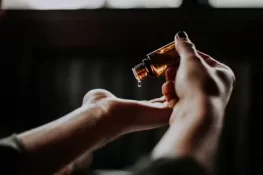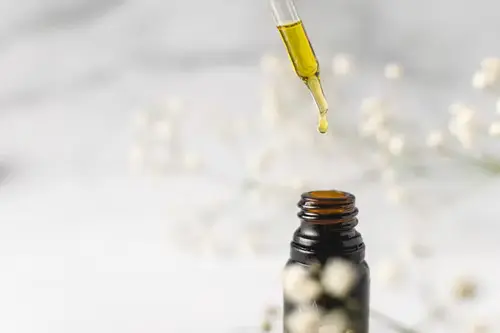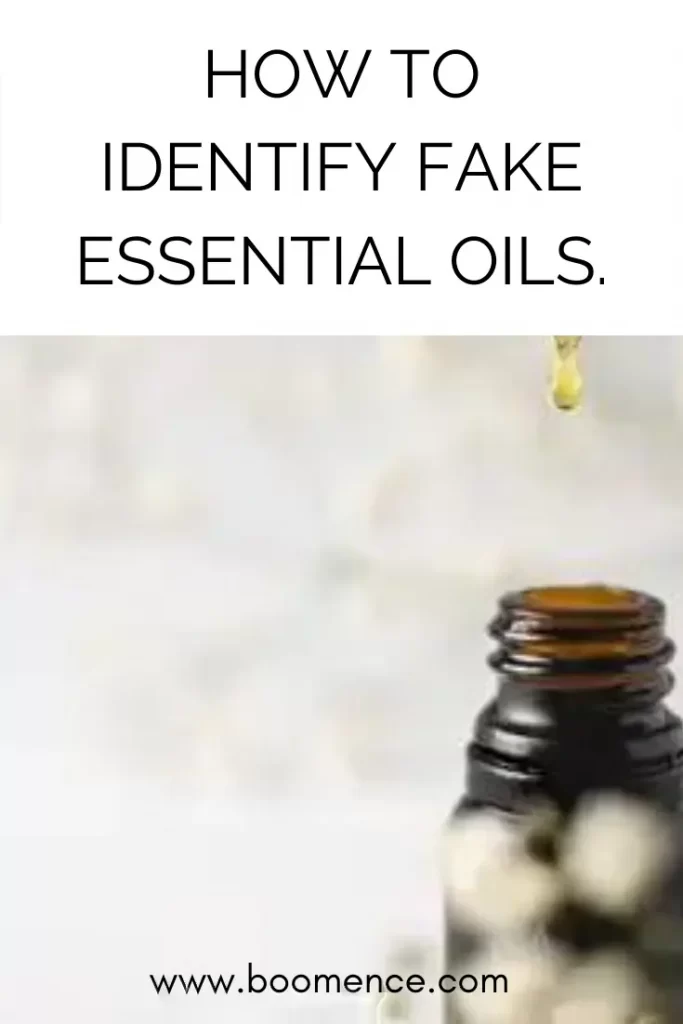How to Identify Fake Essential Oil.

The use of essential oils has been on the increase lately, due to the surge in the popularity of aromatherapy getting the market flooded with fake essential oil properly packaged as genuine.
Lately, aromatherapy has been so popular that individuals buy different essential oil to make their own concoction blends at home & thereby increasing the demand for essential oils.
I also love to make my own aromatherapy blend which I share with you HERE, also never take the authenticity of my essential oil as a joke because it affects your blend outcome.
Whether you are just starting or already in the act of creating a signature scent, fragrance & incense, this is what you need to read to spot an inferior essential oil, that is bad for blending & holistic healing.
WHAT ARE ESSENTIAL OILS
Essential oils are highly concentrated essence derived from plants. These oils harness the therapeutic benefits of plants to heal the mind, body & soul.
Essential oils are known over the years for their potency in natural healing, These powerful oils are gotten from different plant parts either through steam distillation, absolute extraction or cold-pressed methods.
ESSENTIAL OIL SOURCES
Most essential oils are gotten from different parts of the plants, oils are extracted from the dried or fresh seeds, resin, flowers, peels, roots, stems and leaves depending on the plant that needs to be extracted.
Examples of essential oil sources in different plants; Ginger essential oils are gotten from its roots, Most citrus plant essential oils are gotten from the citrus plant rind, fragonia plant holds its essential oils in its branches as well as leaves.
SIMPLE WAYS TO IDENTIFY FAKE ESSENTIAL OILS.
Pure essential oil is made up of hundreds of chemical components some of which are major & minor chemical component which works together synergetically but fake essential oils are mainly isolated compound.
These adulterated essential oils may smell so good but they don’t have any of the therapeutic benefits of pure essential oils
To be sure you are choosing pure essential oil always try to avoid products that contain added ingredients & find out their quality by doing the following.
CONDUCT A PURITY TEST
If you are keen on making a great blend then you shouldn’t joke with the type of essential oil you use.
A simple way to verify the quality of your oils is by conducting a paper purity test.
Drop a few essential oils on a clean paper sheet, leave to dry and examine if a visible ring residue appears on the paper after drying up. If this is visible meaning the oil is not a genuine essential oil and should be discarded.
Pure essential oil doesn’t leave a residue when dried up and shouldn’t feel greasy or oily.
CHECK FOR BOTANICAL NAME
If your acclaimed genuine essential oil doesn’t state the Latin name of the plant on the label then it shows that the oil is not genuine and shouldn’t be trusted.
E.g Thyme will be listed as Thymus Vulgaris and might also mention Thymol to show that it’s gotten from one botanical species.
Other key information includes the Date of distillation or packaging, country of origin, batch number & method of distillation.
CHECK STORAGE BOTTLE TYPE
Genuine essential oils should be stored in glass bottles just like spice blends so they can maintain their potency over a long period of time.
If essential oils are not kept in amber jars, it means they can get direct exposure to sunlight leading to loss of potency and being considered adulterated or fake.
I will recommend that you shop only for essential oils that are stored in amber bottles (dark looking bottles) anytime you are considering buying essential oils.
PRICING
If pricing isn’t a thing for you when shopping then you will be buying more adulterated oils if you are considering saving so much.
If your essential oils are too cheap that is a major indicator that such essential oil is inferior, because most plants produce so few essential oils after tons of plants part is used.
SMELL
If you are a shocker of smell then you will possibly be a victim of fake essential oils, most genuine essential oil doesn’t have a smell that is soo overpowering like fragrance oils.
If your essential oils are so subtle but smell so good and are not overpowering then that is an indicator of genuity.
CHOOSE ORGANIC
Organic essential oil has a higher therapeutic value because they contain a high level of antioxidant and are less likely to have residual pesticides and chemical fertilizers.
VERIFY VENDOR SOURCE & CREDIBILITY
The integrity of the vendor is also a determining factor to affirm if you are buying pure essential oil. Some companies over the years have distinguished themselves by being members of reputable associations that like National Association of Holistic Aromatherapy etc
Also, companies that offer holistic courses in Aromatherapy or have links with qualified aromatherapy practitioners indicate that the company has a deserved reputation to produce genuine essential oils.

SUSTAINABILITY
Certain essential oil has been harvested to extinction which increases the flood of fake essential oil e.g spikenard
Sandalwood & rosewood are now available in a limited quantity.
Some of this essential oil should be avoided unless you can single-handedly trust the vendor.
Its largely advised to avoid some of these essential oils as they can’t be proven to be genuine.
WHAT ARE THERAPEUTIC ESSENTIAL OILS.
All essential oils are therapeutic because they all harness the plant’s therapeutic properties to restore balance to the body, mind & soul.
All genuine essential oil has the potency to heal & restore the balance of the body, making it affirm that all essential oils are therapeutic.
DIFFERENCE BETWEEN FOOD GRADE & THERAPEUTIC ESSENTIAL OILS
Recently some selected essential oil like nutmeg, peppermint, Ginger and more are regarded as food-grade or culinary oils because they can be consumed in minimal quantity in food either for the marinade, soups, frosting & baked food.
These food-grade oils are not extracted through steam distillation which reduces the intensity of the chemical components.
Most importantly, food-grade essential oils are mainly marketing jargon created by brands that sell essential oils.
While Therapeutic essential oils are mainly highly concentrated, volatile oils are mainly recommended for external usage. Its
IS SYNTHETIC ESSENTIAL OIL SAFE ON SKIN
Synthetic oils are not totally safe for skin application unless you can verify if the compounds are safe for you.
Most synthetic essential oils don’t contain the therapeutic benefit that is mainly found in original essential oil.
ARE FAKE ESSENTIAL OILS HARMFUL
Most fake essential oils are synthetic oils, fragrance oils, and infused plants part with carrier oils that are less concentrated.
The use of fake essential oil can be harmful to the body, mind & soul, due to its inability to deliver on the expected value of wholesome healing of genuine therapeutic essential oil.
The level of damage caused by fake essential oil is a factor of what made up the content of the inferior oil.
CAN ESSENTIAL OILS BE USED IN HUMIDIFIERS?
Absolutely, If you are just starting out with essential oil one easy way to start is by humidifying.
Essential oil can be humidified for various purposes either to calm the mind, elevate your mood & or enhance well being.
Some of the oils that can be humidified include Grapefruits, Buchu, lavender etc
IS ESSENTIAL OIL SAFE TO DRINK
A single essential oil contains as many as 100 chemical components which make it unsafe to ingest. It is strongly advised to avoid drinking essential oil.
If you are bent on taking essential oil for internal use, kindly reach out to a certified practitioner for safety concerns.
HOW TO SPOT FAKE ESSENTIAL OILS RIGHT ON THE STORES SHELF.
Quickly spot genuine essential oil even before paying at the counter or paying your network marketers like (Do’terra, Young living)
It is so easy to spot fake essential oil by checking the labels for all of the following
- Is the product label as fragrance oil instead of essential oil.
- Do the brand clearly spelt out the generic name on the packaging
- Is the manufacturing date & batch number outlined.
- Note price if not too cheap.
- The brand name & credibility.
IF YOU LIKE THIS, you might like this section of the BLOG too
PIN HOW TO SPOT FAKE ESSENTIAL OIL FOR LATER.

DON’T MISS A THING
Follow me on Instagram, Twitter & Facebook, or join my growing community Subscribe to my blog to get delicious, easy & cost-effective beauty & food recipes in your inbox weekly.









